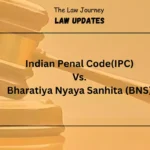Nature of Indian Constitution – The Constitution of India was drafted on the basis of an elected Constituent Assembly and was formally adopted on November 26, 1949. It came into force on January 26, 1950 according to the wishes of the Father of the Nation, Mahatma Gandhi. The Constituent Assembly was created under the Cabinet Mission (1946) to prepare a constitution for independent India.
It was a large representative body with 385 members, of which 292 were chosen by elected members of the provincial parliaments, while 93 members were appointed by the principalities.
But when the Muslim League decided to withdraw its members from the Constituent Assembly of India and when a separate Constituent Assembly was formed for Pakistan on 16 July 1947, the membership of the Constituent Assembly of India was reduced to 299, of which 229 represented the provinces and 70 named the principalities. The first meeting of the Constituent Assembly took place on 9 December 1946 with Dr. Sachchidanand Sinha.
Subsequently president Later, Dr. Rajendra Prasad was elected its President on 11 December 1946. 26 January 1950 was a red letter day in the long and checkered history of India. Because on that day the current Constitution of India came into force, announcing the birth of a new republic to the world.
What is the constitution? (Nature of Indian Constitution)
The Constitution is a document of the faith and aspirations of the people, which has a special legal sanctity. It is the fundamental law of a country and all other laws and customs of the country must apply. It defines the framework and main functions of the various organs of government, as well as the relationship between the government and its citizens.
Is Indian constitution federal?(Nature of Indian Constitution)
There have been many unresolved controversies over whether the Constitution of India is federal or unitary. Some considered it a federal state, while others considered it a unitary state. Some others made compromises. According to them, it has both federal and unitary characteristics. In the unitary constitution, the powers of the government are centralized to one government, i.e. the central government.
The provinces are subordinated to the center. In the federal constitution, there is a separation of powers between the federal government and the state governments, and both are independent in their fields. Dr. K.C. Wheare in his book “Federal Government” described the Constitution of India as quasi-federal. Jenning also characterized it as a highly centralized federal state.
The United States Constitution is generally considered an example of a federal constitution. This creates a double policy or Dual form of government ie. federal and state government. The power of both central and state government is shared and both are independent in their respective fields. The existence of coordinating bodies independent of each other is the essence of the federal principle.
federal features of Indian constitution (Nature of Indian Constitution)
A constitution embodying a federal system usually has the following five characteristics
- Distribution of powers – An important feature of the federal constitution is the division of power between the central government and State Governments. Federation means sharing power between states among a number of coordinate bodies, each of which comes from the Constitution and is controlled by the Constitution.
- The supremacy of the Constitution – Separation of powers is of no use if the constitution is not considered supreme and governments are not can break it. A supreme constitution is necessary if the government is to be federal.
- A written constitution. – The constitution must also be a written constitution. Maintaining the supremacy of the Constitution is practically impossible. Basing such an arrangement on understanding or agreements would certainly create misunderstandings and disagreements.
- Rigidity – From the point of view of the Federation, it is necessary that the right to modify the constitution is not given exclusively to the central or regional units. Both must participate in the change process. The constitution of the country is considered a permanent document. It is the highest law of the land. This constitutional supremacy can only be maintained if the method of amendment is rigid.
- Power of Courts – In a federal state, the judicial supremacy of the Constitution is essential for the existence of the federal system. The independent and impartial power of the courts is essential to the federal structure of the Constitution. The Constitution of India has all the above important features of a federal constitution. The Constitution establishes a dual government, a dual system of government, where one level is the central government and the other is the state government. Each level of government is the pinnacle of its field. Constitution of India is written and it is supreme.
Professor Wheare noted: “The Constitution establishes a system of government which is also quasi-federal … a unitary state with secondary federal characteristics rather than a federal state with secondary unitary futures”. Jennings characterized it as a “strongly centralized alliance”.
Although the Indian constitution has the basic features of a federal state, in some ways it differs significantly from the typical federal system in the world.
They are ; (Nature of Indian Constitution)
1. Powers of Parliament to form new states and change the boundaries of existing states – Parliament of India can form new states, it can increase or decrease the area of any state and change the boundaries or name of any state. The Constitution does not protect the territorial integrity of states. Parliament can unilaterally increase or decrease the area of any country.
2. Appointment of governors – State governors are appointed by the President (Articles 155 and 156) and are responsible to him. However, this does not matter much because the governor is only the constitutional head of the states, who usually acts on the advice of his ministers.
3.Parliament’s power to enact within the national interest.– Beneath article 249, Parliament is enabled to create laws with regard to each matter counted within the State list in the event that the Rajya Sabha passes a determination by 2/3 larger part that it is vital within the national intrigued.
4. Emergency Provisions.- The Structure conceives three sorts of emergencies- (a) Emergency caused by the war or outside aggression or armed rebellion (Article 352); (b) Emergency caused by the failure of Constitutional machinery in States (Article 356); (c) Financial emergency (Article 360).
When the announcement of emergency is in operation the Parliament is enabled to create bearings to any State and Parliament is engaged to create laws with regard to any matter identified within the State List.
Thus, in rule, Indian Structure is government but with capacity to work as unitary when so required.
Kuldip Nayar v. Union of India, MANU/SC/3865/2006 : AIR 2006 SC 3127: 2006 Discuss SCW 4394: (2006) 7 SCC 1: 2006 (6) SCJ 702, the Supreme Court of India too observed that federal principle is prevailing in our Constitution which federal principle is one of the fundamental highlights of our Constitution.
Related Post | Nature of Indian Constitution
When the Indian Constitution adopted ?
The Indian Constitution was adopted on November 26, 1949.
When Indian Constitution came into force ?
January 26, 1950.
What is the constitution ?
The Constitution is a document of the faith and aspirations of the people, which has a special legal sanctity. It is the fundamental law of a country and all other laws and customs of the country must apply. It defines the framework and main functions of the various organs of government, as well as the relationship between the government and its citizens.
Is Indian constitution federal ?
There have been many unresolved controversies over whether the Constitution of India is federal or unitary. Some…..
What are the federal features of Indian constitution?
1. Distribution of powers
2. The supremacy of the Constitution
3. Rigidity
4. Power of Courts
Reference Books | Nature of Indian Constitution
- Constitutional Law by AK Jain
- Constitutional Law by MP Jain
- VN Shukla Constitution of India
- Constitutional Law by JN Pandey
- Shorter Constitution of India by Durga Das Basu, 1981













